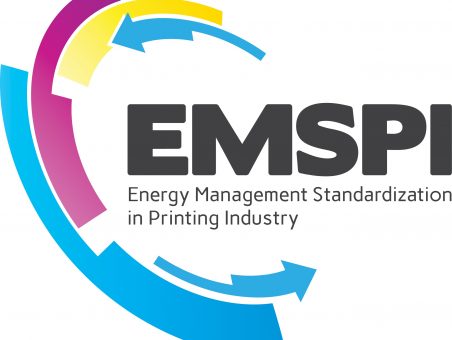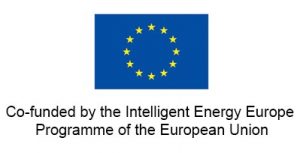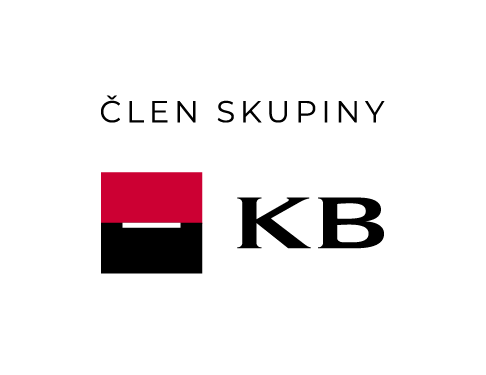03/29/2017

EMSPI – Energy management standardisation in the printing industry - Enviros

Energy management is a trend that is gradually moving from the category of “benefit for business” to the category of “essential requirement of business”. “Energy management” is a summary of all activities which concentrate on areas with significant energy consumption, monitor energy consumption and optimize it by using system tools. Energy management can have immediate results in the form of financial savings in energy consumption, but more important is its long-term benefits.
Through the program the Intelligent Energy Europe (IEE) the European Union supported the project called EMSPI, which targeted ways to inform, motivate and assist printing companies in reducing energy consumption and implementing of energy management system.
PROJECT ITSELF
The project aimed to promote actions for the increase of energy efficiency in European small and medium sized enterprises (SMEs) of the Printing Industry by promoting the implementation of Energy Management System based on the global standard ISO 50001. Standard ISO 50001 is a set of requirements, the fulfillment of which leads to a sustained increase of energy efficiency in the organization, thereby improving the competitive position of the company on the market.
The main parts of energy management are:
- Energy policy
- Measuring and evaluating of energy consumption
- Identification of energy savings
- Setting goals
- Action plan (including the responsibility for the implementation of individual measures)
PROJECT IN THE CZECH REPUBLIC
In the Czech Republic the project was attended by 20 companies. In each of them the initial state of energy management was evaluated, areas with significant energy consumption (with high potential of energy savings) and set up an action plan. Those companies that had decided to implement an energy management system were subjected to a more detailed assessment of energy consumption, their initial state of the level of energy management was assessed and the concrete measures leading to energy saving and energy costs were proposed.
Energy savings potential has been evaluated in several areas, such as heating, ventilation, source of heat, lighting, but also cooling, drying, and not least in the field of thermal properties of buildings.
EXAMPLES OF MEASURES
- Lighting replacement
Lighting is very important for most companies due to technological development in this area. It often contributes to the total electricity consumption in the range from 8 to 15%. Lack of natural light (small windows), specific technological requirements for lighting and operation of lighting leads to a significant electricity consumption. For these reasons, it is appropriate to focus on this area in terms of energy savings.
The new generation of LED sources is fully capable of replacing the traditional bulbs and fluorescent lamps in all respects. Characterized by high efficiency, long life, saving up to 80% compared to the traditional lights and saves not only money but also the environment.
A typical measure may be a company with a total consumption of electricity of 1,470 MWh/year, electricity consumption for lighting is 18%. Replacing a large part of the existing lighting with LED sources will achieve electricity savings of 166 MWh/year, representing approximately 62% energy savings on lighting. When specific cost is CZK 9,000 for the saved MWh of electricity the simple payback period will be approximately 4 years.
- Waste heat from compressors
Heat recovery of compressed air equipment offers a high potential for energy savings. Even small companies can benefit from targeted use of the waste heat of the compressors. The best type of compressor for efficient heat recovery is a screw compressor with air cooling or a fluid injection. The most effective and easiest method of heat recovery exists in direct utilization of the cooling air heated by compressor.
The heated warm air can be used in several ways. In addition to the total or supplementary heating of facilities or warehouse space the warm exhaust air of compressor can be used differently. For example for promoting the drying processes, creating hot air barriers or preheating the combustion air of heating sources (to increase its efficiency).
The payback period of the measure is directly influenced by the investment costs, electrical input for the compressor and operating hours.
- Thermal insulation of building constructions
The construction of older buildings built of solid brick, CDM brick blocks, cinder blocks or gas-silicate blocks, which are not insulated, do not meet current standard requirements of building structures according to the Czech standard 73 0540-2. Heat loss is high and the costs for heating then represent a large percentage of the total energy costs.
In the case of a sufficient insulation of building structures and also windows’ replacement, when the heat from indoor air is accumulated into the wall and indoor climate and thermal comfort increase, it leads to saving of heating costs of 60%.
Such a measure due to the high investment costs has a higher payback period. But the priority is the quality of the indoor environment, reduction of heating costs and extention of the life of the building.
CONCLUSIONS
Efficient energy management plays an important role in improving of energy efficiency in industry. The project showed that at the beginning of the project the companies were not familiar with techniques how to monitor, analyze and plan their energy consumption and how to involve employees at all levels in to the process of continuous reduction of energy consumption. After the successful completion of the project, the majority of participating printing companies strengthen their knowledge about partial activities of energy management, which together lead to more efficient use of energy and reduce emissions of greenhouse gases.
Back to previous page


